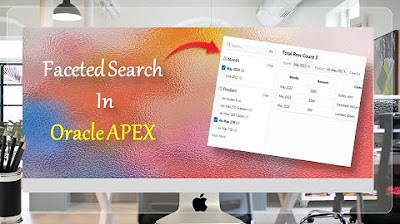How Flipkart made their type ahead search hyper personalized
Summary
TLDRThis video dives into Flipkart's hyper-personalized type-ahead search feature, exploring how it enhances user experience by tailoring search suggestions based on past behavior. It highlights the system's high-level architecture, focusing on ranking factors like popularity, grammar quality, and past purchases. The video also introduces key concepts in system design, such as creating personalized cohorts and leveraging predictive models, while comparing non-personalized versus personalized search suggestions. Additionally, the creator promotes their system design course, offering both live and recorded options for engineers to collaboratively design systems and learn from real-world examples.
Takeaways
- 🔍 Flipkart's type-ahead search feature is hyper-personalized to improve user experience and make searches faster and more relevant.
- 🛠️ The course on system design emphasizes hands-on learning in a cohort-based format where participants collaborate to design systems.
- 🌍 Over 800 engineers from companies like Google, Microsoft, and Flipkart have taken the course, which focuses on real-world system design principles.
- 📊 Flipkart's approach to personalized search suggestions involves leveraging user behavior, such as past purchases and search history, to tailor recommendations.
- 🏷️ Ranking search suggestions is based on parameters like popularity, click performance, and grammar quality to ensure high relevance and user satisfaction.
- 👥 Instead of grouping users into cohorts, Flipkart uses real-time personalization, evaluating user intent based on the context of previous queries.
- 📂 A core aspect of Flipkart's solution is understanding user intent through their product taxonomy, ensuring that suggestions align with the user’s recent search behavior.
- 🤖 Flipkart uses machine learning models, such as XGBoost, to continuously improve search suggestion rankings by analyzing user interactions with suggestions.
- 💾 Solar (a search engine) is integrated with machine learning models to rank search suggestions more effectively, using features like learning-to-rank (LTR).
- 💡 Flipkart’s architecture incorporates caching, big data pipelines, and machine learning models to optimize and deliver hyper-personalized search suggestions.
Q & A
What is the main goal of Flipkart's type-ahead search suggestions?
-The main goal of Flipkart's type-ahead search suggestions is to make the search process more user-friendly by providing hyper-personalized search term recommendations, reducing the effort needed for users to type out full queries and ensuring that the suggestions are highly relevant based on the user's past interactions.
What factors does Flipkart consider to create hyper-personalized search suggestions?
-Flipkart considers factors such as the user's past purchase history, the frequency and popularity of search terms, the quality of search results (including spelling and grammatical accuracy), and the likelihood that a user will click on a search term to create hyper-personalized search suggestions.
How does Flipkart determine which search terms to rank highest in their suggestions?
-Flipkart determines which search terms to rank highest by evaluating three key parameters: the quality of the suggestion (based on popularity and correctness), the likelihood that the search term will yield good results (ensuring no 'no results found' errors), and the personalization of the suggestions based on the user's past behavior.
Why is personalization important in the search suggestion process?
-Personalization is important because it ensures that the search suggestions are highly relevant to each user. By considering past searches, browsing history, and purchases, Flipkart can predict what the user is likely to search for next, improving the overall search experience.
What is the purpose of using a taxonomy in the search personalization process?
-The taxonomy is used to categorize products and map search queries to specific categories like 'Footwear' or 'Electronics.' This helps maintain contextual relevance across multiple queries within a session, making the suggestions more accurate by focusing on related product categories.
How does Flipkart's model handle reformulated queries during a session?
-Flipkart's model tracks the user’s reformulated queries, meaning if a user makes multiple related searches (e.g., 'red shoes' followed by 'Nike under 2000'), it can predict that the next query will likely belong to the same category and suggest relevant products accordingly.
What machine learning technique does Flipkart use to improve its search suggestion rankings?
-Flipkart uses a decision tree-based model, specifically XGBoost (eXtreme Gradient Boosting) with 100+ trees, to rank search suggestions. The model continuously learns from user interactions with the suggestions, improving its accuracy over time.
How does Flipkart optimize search suggestions for non-personalized queries?
-For non-personalized queries, Flipkart leverages a cache of globally popular search terms. If a query cannot be personalized, the system serves results from this cache, ensuring quick responses without requiring real-time model computation.
What is the role of Solar in Flipkart's search architecture?
-Solar, a search engine, powers Flipkart's search suggestions by matching search terms based on prefixes and ranking them using machine learning models like XGBoost. It replaces the traditional TF-IDF ranking method with Learning-to-Rank (LTR) to ensure personalized and relevant search results.
How does Flipkart update its machine learning model used in search suggestions?
-Flipkart updates its machine learning model by continuously training it on user interaction data (e.g., clicks on search suggestions). The model is trained periodically, and the updated version is exported as a JSON file and ingested into Solar, where it is used for ranking search results.
Outlines

Этот раздел доступен только подписчикам платных тарифов. Пожалуйста, перейдите на платный тариф для доступа.
Перейти на платный тарифMindmap

Этот раздел доступен только подписчикам платных тарифов. Пожалуйста, перейдите на платный тариф для доступа.
Перейти на платный тарифKeywords

Этот раздел доступен только подписчикам платных тарифов. Пожалуйста, перейдите на платный тариф для доступа.
Перейти на платный тарифHighlights

Этот раздел доступен только подписчикам платных тарифов. Пожалуйста, перейдите на платный тариф для доступа.
Перейти на платный тарифTranscripts

Этот раздел доступен только подписчикам платных тарифов. Пожалуйста, перейдите на платный тариф для доступа.
Перейти на платный тарифПосмотреть больше похожих видео

OpenAI JUST Dropped New ChatGPT Search and It’s Absolutely Fire!

Video Presentasi Laboratorium Interaksi Komputer Kelompok 1

길게 설명하지 않아도 척척 알아듣는 AI검색 엔진 '앨런' (변형진 이스트소프트 개발TF센터 센터장)

Faceted Search In Oracle APEX - Part 37

cid=6826ff56285ffb7096a7cbebf1c9c8aa

Adding Locations to Your Product | Getting Started on GetYourGuide
5.0 / 5 (0 votes)
